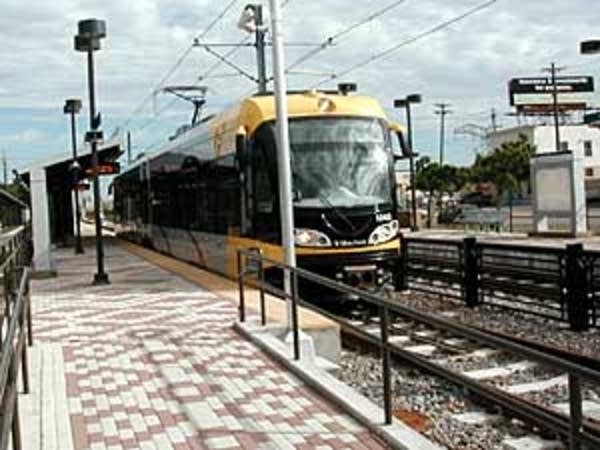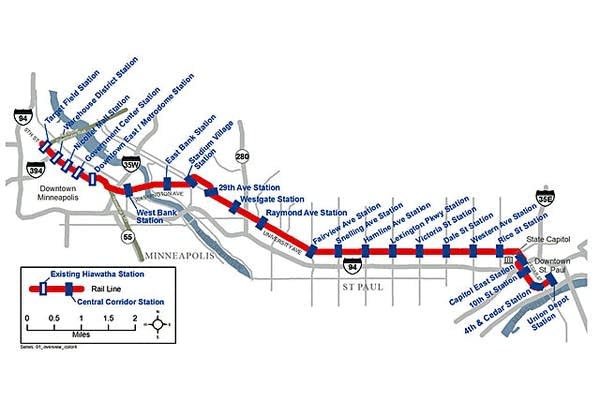Central Corridor proponents wrestle with tough choices

Ramsey County Commissioner Rafael Ortega always envisioned the light-rail train pulling into the rear concourse of downtown St. Paul's Union Depot. As he saw it, the last stop would converge into a regional transit hub bustling with high-speed trains, taxis and buses. Ortega isn't giving up on that dream, but he is willing to leave it out of the light-rail project for now.
"The one thing I don't want to do is lose the Central Corridor, and that is very critical," said Ortega. "Given the posture that this governor has taken in January, it really has some people concerned that it may not get built."

Ortega was referring to a letter Gov. Tim Pawlenty wrote last month. In the letter Gov. Pawlenty urged key partners in the project to scale down the massive project.
If the project were built with all the things requested from various community groups, the total price tag would exceed $1.2 billion.
Create a More Connected Minnesota
MPR News is your trusted resource for the news you need. With your support, MPR News brings accessible, courageous journalism and authentic conversation to everyone - free of paywalls and barriers. Your gift makes a difference.
Now, Ortega and other commissioners are suggesting the light-rail line end about a block and a half sooner, in front of the depot along Fourth Street. It would trim the project by as much as $50 million. On Tuesday, the county is expected to pass a resolution recommending the move.
And although the action is only advisory, it is getting a warm welcome from St. Paul business leaders, as well as major players like Peter Bell. He chairs the Metropolitan Council, the lead agency on the project.

"We need to get the cost of the Central Corridor light-rail line down so we can secure the federal matching dollars. And Ramsey County's proposed action is a very positive step in that direction," Bell said.
Bell said shortening the route would also decrease the total travel time, and thereby help the project meet a complex formula for federal funding.
The big deadline is February 27, when the Met Council will vote on the designated route. But even before then, an advisory committee to the Met Council will hear a handful of scenarios next week. All of them will meet the so-called "cost effectiveness index." Bell said at least one of the scenarios will make the case for the shortened route.
On the other end of the transit line in Minneapolis, there may be more concessions. The University of Minnesota is considering ways to trim costs, including a shortened tunnel or another route that would take the train along University Avenue rather than Washington Avenue.

University President Robert Bruinicks said the school still remains adamantly opposed to having street-level railroad tracks running through campus along the busy Washington Avenue for safety and traffic reasons.
"Running it above grade without finding alternative solutions would be a dead failure," Bruinicks said. "So we're working very hard to solve these problems, and I'm convinced we can solve them, but we can't solve them unless people are willing to find solutions that really work and get people to where they need to go.
The project would require funding from federal, state and county governments. And despite what's shaping up to be a busy month, the Central Corridor has a ways to go. The first train wouldn't start rolling until at least 2014.
